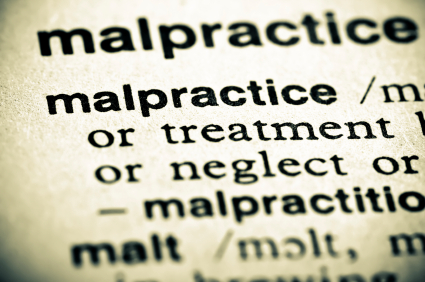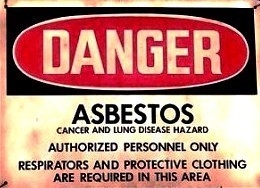 In tort law, it’s not uncommon to hear the expression “deep pockets” thrown around in reference to who gets pursued when things go awry. It’s true, more often than not that when placing the blame for a tortious act, those involved with the deepest pockets get thrown under the bus. It’s very true that those are the groups that have the most to lose in financial terms, thereby representing the largest possible gain.
In tort law, it’s not uncommon to hear the expression “deep pockets” thrown around in reference to who gets pursued when things go awry. It’s true, more often than not that when placing the blame for a tortious act, those involved with the deepest pockets get thrown under the bus. It’s very true that those are the groups that have the most to lose in financial terms, thereby representing the largest possible gain.
When it comes to one of the deepest sets of pockets, the United States government, you don’t hear about large settlements when they are determined to be at fault. That’s due to government tort liability, and the protections our federal and state governments are given against tortious actions.
It may seem like another example of our government out to protect just themselves, but there is actually a very sound reason behind it; one that most citizens get on board with. In truth, the only money the government really has is money that has been paid to it by us, the taxpayers. If someone were to prevail in a tortious action against either federal, state or a municipal government, ultimately it would be the taxpayers who would foot the bill for the government’s screwup. Tort law is about making somebody whole after they have been wronged due to another’s negligence. Taking taxpayer money to do that just leaves another whole group aggrieved.
It may seem like the Federal Tort Claims Act of 1947, which enacted the first limits on governmental liability, helped protect the government, but in actuality it is the first piece of legislation that stated the United States government was okay with giving its people the right to sue them. Previously, there had been an absolute sovereign immunity, in that citizens were not allowed to take a government entity to court.
Another reason for government tort liability is the recognition that any government entity is composed of so many moving parts that it almost needs a bit more leverage, considering how many things they have their hands in every day. In some ways, by participating in the things that our government provides for us such as paved, maintained roads and public schools, we have also given up a little bit of our claim against them when things go awry.
In some cases, the government enjoys total immunity. In others, it may only enjoy a limit on said liability, limiting the amount that can be sued for in terms of persons injured, objects injured, or number of occurrences.
Government tort liability may seem like an easy cop-out to get such an entity off the proverbial hook. However, it actually provides a mechanism to allow citizens to ask for a redress of grievances against their government. Sometimes, like in the case of a state employee operating a motor vehicle, or doing damage to someone’s real property, the government enjoys no limit on claims.
While it may limit the ability of someone greatly injured by our government from collecting a big payday, it does allow us to take our governments to court, which is a very important check on the bureaucracy we fund with our hard earned dollars.
 Even the most careful worker can sustain an injury in the workplace. If you are injured on the job, your injuries are covered by Workers’ Compensation laws and regulations. It is important to make sound decisions so that your legal rights are protected.
Even the most careful worker can sustain an injury in the workplace. If you are injured on the job, your injuries are covered by Workers’ Compensation laws and regulations. It is important to make sound decisions so that your legal rights are protected. If you feel you’ve suffered because of a doctor’s professional negligence or lawyer’s professional negligence, then you may want to consider filing a malpractice lawsuit.
If you feel you’ve suffered because of a doctor’s professional negligence or lawyer’s professional negligence, then you may want to consider filing a malpractice lawsuit. Mesothelioma, a rare cancer, develops in the layer of tissue that covers your mesothelium, or internal organs. Unfortunately, it is an aggressive and deadly form of cancer. You didn’t do anything wrong to acquire mesothelioma. Most likely, you developed mesothelioma after being exposed to asbestos, a dangerous chemical, at your workplace. Mesothelioma takes about 10 to 40 years to develop after the initial exposure.
Mesothelioma, a rare cancer, develops in the layer of tissue that covers your mesothelium, or internal organs. Unfortunately, it is an aggressive and deadly form of cancer. You didn’t do anything wrong to acquire mesothelioma. Most likely, you developed mesothelioma after being exposed to asbestos, a dangerous chemical, at your workplace. Mesothelioma takes about 10 to 40 years to develop after the initial exposure. Wearing a motorcycle helmet is of paramount importance, both from the perspective of your own health and from the legal angle. Motorcycle helmet laws in California (like many laws) can be somewhat complicated, but what it boils down to is that it has important ramifications for any personal injury claim you might consider.
Wearing a motorcycle helmet is of paramount importance, both from the perspective of your own health and from the legal angle. Motorcycle helmet laws in California (like many laws) can be somewhat complicated, but what it boils down to is that it has important ramifications for any personal injury claim you might consider.